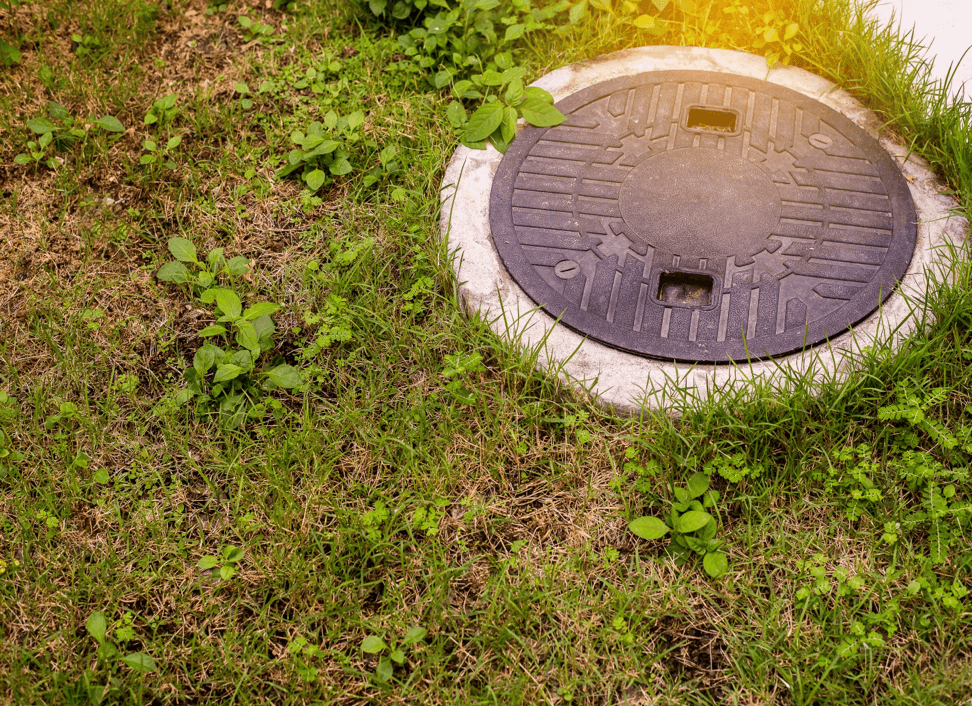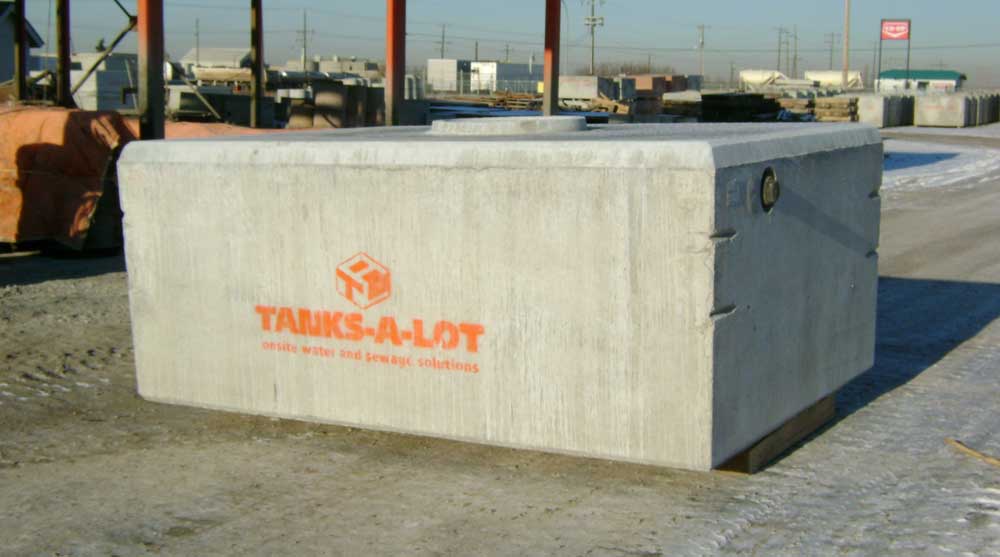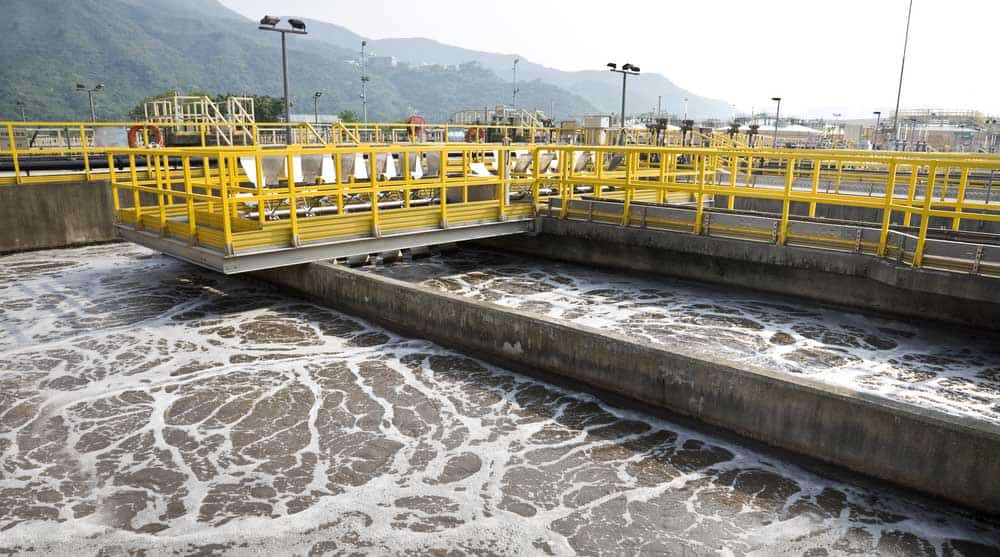


 0
0 While planning and designing your dream home, you will be involved in some major decision making. You need to ask the right questions to the right people like engineers, contractors and interior designers. They are professionals who will prepare the most appropriate strategy for you. When it comes to a sewage disposal system, preliminary groundwork can save you a lot of trouble and headaches later. Sewage treatment plants consist of adequate plumbing and underground tanks, where issues can crop up unexpectedly.

At Tanks-A-Lot, we answer some of the frequently asked questions by homebuyers and builders about sewage treatment plants and disposal systems:
To learn more about septic tank maintenance or any other kind of maintenance, head over to our blog!
Have peace of mind and contact Tanks-A-Lot at Sherwood Park. We will listen to all your needs and custom make your sewage treatment plant for you. We are a manufacturer and distributor of Modulair® Wastewater Treatment Plants, scalable systems capable of treating up to 300,000 gallons per day. We custom-make precast concrete tanks – the preferred choice for underground septic tanks at residential sites.
The construction industry is a major factor in determining the well being of a nation’s economy and they represent 6% of the global GDP. The industry is currently on an upswing in Canada and is showing no signs of stopping in some of the country’s largest urban hubs. There are great changes underway and the importance of precast concrete tanks is also going up.

One of the questions that is currently echoing in the industry is – “Are we undergoing the golden age of underground infrastructure?”
Options for Homes with No Access to Municipal Services
Any home that is not connected to a municipal or city sewage system often needs an alternative solution for sewage disposal. Septic tanks or holding tanks are buried underground with about 4’of soil cover to help avoid frost in the ground from heaving the tank and damaging it or its connections. These on-site sewage solutions are cost effective and provide a reliable means of handling and treating your sewage.
Precast Concrete in Underground Applications
Unlike normal concrete, precast concrete is not poured into its mould on site. Precast concrete is manufactured in a controlled factory environment by making use of state-of-the-art manufacturing procedures.
Moulds for precast concrete are adjustable, reinforceable and reusable. Once poured, the technicians vibrate and cure the concrete before undergoing any final finishes, such as coring for openings or mechanical component fastening, before transporting the product to the site.
Precast concrete can be used in a number of different industries as it comes in various sizes and shapes. A huge number of finished architectural designs, shapes and colours can be used to make precast concrete fit any environment.
The added benefit of precast concrete products being manufactured in quality-controlled environments for on-time delivery and easy installation should also be taken into account.
Precast Concrete Tanks for Your Underground Residential Applications
The main uses for underground tanks in residential applications are:
There are many options available when you are choosing a tank for underground residential applications. Before anything else, you want to choose a tank that has the right capacity. After that, you should ensure the selected tank will provide years of reliable service. You should be mindful of the factors to consider before buying a tank.
The best choice for an underground tank is precast concrete as it holds many advantages over steel, plastic or fibreglass tanks.
Tanks a Lot Precast Concrete Products
Since 1982, Tanks-A-Lot Ltd has been manufacturing and supplying precast concrete in Alberta and British Columbia. Our residential, commercial, civil, and industrial tanks are environmentally friendly, watertight, and strong. These precast tanks are made to meet your requirements and can be easily installed as well.
Call us today for your precast concrete tanks or drop by our new office in Sherwood Park.
A sewage treatment plant is a system designed to remove contaminants from wastewater until it is safe to be discharged into the environment. The water is treated using a combination of physical and biological processes that work to reduce organic compounds. At Tanks-A-Lot Ltd., we supply wastewater treatment plants in Alberta for homes and commercial developments made of durable precast concrete. Let’s take a look at how treatment plants work.

The Sewage Treatment Process
There are a number of steps involved in sewage treatment. Specifics can vary depending on system size and treatment requirements, but the main processes involved remain the same. Wastewater that enters a precast concrete sewage treatment plant in Alberta undergoes the five following stages as it moves through the treatment plant’s chambers.
Wastewater leaves a building and is transported to the first chamber of the treatment plant via an inlet pipe. The wastewater remains in this chamber for preconditioning – there is no need for a separate holding chamber. This helps to cut down on the size of the plant, saving you space on your property.
In the preconditioning stage, microorganisms begin cleaning the wastewater while gravity draws solids to the bottom of the chamber. The flow rate of the water is equalized to prevent it from overloading the rest of the system during heavy use periods. Proper flow equalization throughout the system ensures that all wastewater entering a plant is fully treated and remains in each chamber as long as necessary.
The wastewater enters another chamber where diffusers provide the oxygen needed by microorganisms to treat the water, a process known as biological oxidation. The microorganisms form a biofilm that converts any contaminants in the water into stable substances. Carbon compounds and sulphate are degraded and ammonium is converted into nitrate, which is further reduced into oxygen and nitrogen.
The wastewater moves on to the clarification chamber, where any remaining particles from the cleaning stage settle on the bottom of the chamber and wastewater is completely converted into clarified liquids. Settled solids are sent back to the first chamber for further cleaning.
The clarified water is now safe to be discharged into the environment and exits through the outlet pipe into a disposal bed. The discharged liquid is clear and odourless and the disposal bed is smaller than a traditional septic drain field.
Residential and Commercial Sewage Treatment in Alberta
Tanks-A-Lot Ltd. provides reliable and cost-effective wastewater treatment solutions in Alberta that can be tailored to your unique needs. Our precast concrete sewage treatment plants range in capacity from 1,500 to 500,000 gallons per day and are suitable for a variety of applications, including residential, commercial, industrial, and municipal. We can enlarge or modify systems as-needed. Each plant is completely self-regulating and does not require any routine maintenance.
To learn more about whether a precast concrete treatment plant in Alberta is the right choice for your property, just contact Tanks-A-Lot Ltd. today.
Many of today’s residential communities and shopping centres are located near busy roadways that give rise to vehicle traffic and noise. At Tanks-A-Lot Ltd., we supply and install precast concrete noise barriers in Alberta that can make living and working in these areas more enjoyable. Noise barriers have a variety of benefits for residential, subdivision, commercial, and municipal applications.
Benefits of Noise barriers
Compared to other types of fencing, such as wood or vinyl, precast concrete comes with many distinct advantages. Contractors, developers, project managers, owners, and designers across Alberta choose noise barriers because they offer:
Excellent Sound Attenuation
The main reason why noise barriers are installed is to reduce noise pollution, typically from a highway or a busy road. The concrete is thick enough and the barriers are tall enough to keep the noise from travelling in a straight line from the source, significantly lowering the sound by several decibels. Noise barriers make it much more comfortable to live, work, and shop near high-traffic roads.
Enhanced Privacy and Security
Another advantage to using noise barriers in Alberta is that they provide fantastic privacy and security. The solid construction and height of the concrete fence prevent anyone from seeing through or over it. The walls are also non-scalable, preventing anyone from climbing over and accessing your property from anywhere but through a main entrance.
Superior Aesthetic Appeal
Noise barriers may be made of concrete, but they can mimic the look of a range of different stone textures. The realistic, natural stone designs are aesthetically pleasing and can enhance other surrounding features and accents. It couldn’t be easier to choose a design and a texture that will aesthetically integrate into the neighbourhood.
Greater Durability
Finally, precast concrete noise barriers are among the sturdiest and longest lasting type of fencing you could choose. Other materials can easily become damaged or wear down over time. Precast concrete can withstand harsh Alberta weather conditions, extreme temperatures, and physical impacts, all with minimal maintenance on your part.
Noise Barrier Applications
It is common to see precast concrete noise barriers in Alberta in just about any situation where noise attenuation, privacy, and security are important priorities. Some typical examples of noise barrier applications are:
Find Out More About Noise Barriers in Alberta
Does a noise barrier sound like the right fit for your project? Tanks-A-Lot Ltd. carries a variety of affordable Verti-Crete® precast concrete fence products for all applications. We have installed noise barriers throughout Alberta and British Columbia for smaller residential and larger municipal projects. Our experts can help you choose from a range of sizes and textures to ensure an attractive and effective solution for your needs.
To learn more about how noise barriers may benefit you and about pricing for noise barriers in Alberta, don’t hesitate to contact Tanks-A-Lot Ltd. today.
Proper septic tank maintenance is crucial for the system to work properly; it is easy to do and should be done every 6 to 12 months. Having a well maintained tank will also help with the longevity of your pumps and dispersal field. Never go inside the tank without the proper equipment and training.
Step 1: Visual/smell assessment
.
Step 2: Remove lid to compartment 1 (working side)
Step 3: Remove lid to compartment 2 (pump chamber)
If any of the above items are not functioning properly make sure to call your supplier or your installer. If you regularly do these checks, your system should last at least 50 years. Please contact Tanks-a-Lot if you need a reference on a professional service provider.
Although Moving Bed Bio-film Reactor (MBBR) may seem like a new technology, it’s been around since the late 1980s. As a proven wastewater treatment method for residential and commercial applications, in over 50 countries, MBBR has a track record of out performing all other systems. MBBR’s high performance and low maintenance was the driving force behind Tanks-A-Lot adopting this technology.
A MBBR system consists of an aeration compartment with special plastic carriers called Kaldness, providing a surface where a bio-film can grow. These carriers are made of material with a density close to that of water, allowing them to easily move around all of the compartment. This ensures good contact between the substrate in the influent wastewater and the bio-mass on the carriers.
Tanks-A-Lot uses this MBBR technology in its WSB Clean treatment plant; a 1 piece, 4 compartment tank in which the Kaldness mixes and rolls with the effluent in the 2nd compartment. This is done by introducing fine air through a blower, oxygenating the effluent at the same time. The rolling Kaldness will constantly be bouncing into each other and into the walls of the tank, breaking down the bio-mass and cleaning itself and the tank at the same time. The process is so effective that it limits the service in this 2nd compartment to simply changing an air filter; there are no messy bio-filters to pull out or pressure washing needed. The wastewater will then pass to a third compartment to allow the solids to settle out and be returned to the first compartment for more treatment.
To learn more on the WSB treatment plant, please click the link below to see more or contact our office for more information.
Cross section of Tanks-A-Lot model W2560 Tank, for a home with up to 5 bedrooms
At Tanks-A-Lot, we manufacture septic tanks and supply materials to the industry, but we don’t install systems. Because of this, it may be difficult for us to estimate the complete cost of a project. In our Guide to Septic Systems we cover some of the costs associated with installing systems but don’t discuss the procedures. Below is a look at these procedures as a 3-step process:
Step One: Budgetary Costing and Proposal
You will want to speak with at least 3 installers to get a budgetary cost; most likely they have done work in the area and will know what to expect based on the geographic region. Be sure to evaluate their character and ask for references from past projects. There is usually no charge for this step.
Step Two: Soil Analysis and Estimating
Once you feel comfortable with the contractor, you can ask them to perform the onsite analysis which involves digging 2 test pits, taking multiple soil samples, and sending them to a lab for analysis. Once they have the results they can design a proper system and provide you with a firm estimate. This step usually costs $1500 to $2000, but you can use the results of the analysis to get other estimates from installers and use this design for construction.
Step Three: Construction and Servicing
Once you have selected an installer, make sure that you have a completion date in writing; it is possible that installers will book too many jobs in a year and will be unable to fulfill their commitments, leaving homeowners to scramble in late season which usually leads to over-paying for work. Most installers will offer at least a 1-year warranty on their work and 20 years on the septic tank or wastewater treatment plant.
A few words of caution: Do not use installers that are not certified to install systems, and avoid installers that are too cheap; most times these installers are not building a proper system and it will cost you more in the long run.

Septic tanks can have a life of 50 years or longer if they are well cared for. Unfortunately most homeowners do not know what the dos and don’ts are of caring for a tank, and consequently some septic tanks do not serve households to their fullest potential. Here are just a few not-so-obvious tips that will increase the longevity of your tank:
.
These simple tips will help maintain and prolong your septic system for many years. To learn more and septic system maintenance, please contact the knowledgeable staff at Tanks-A-Lot.

The Alberta Private Sewage Systems Standard of Practice 2009 requires a Site Evaluation to be completed as a prerequisite to completing a septic system design and applying for a permit. Among other things, the Site Evaluation Report must include the address and legal description of the property, the parcel identification number, and a dimensioned or to-scale site plan including property boundaries and easements. One of the easiest ways to start putting together a complete site plan is to get an electronic image of the subject property and then use computer based tools to add other required information, such as location of buildings and wells.
In Alberta, the easy-to-use and authoritative source for property boundary information on the Internet is called “SPIN” (Government of Alberta’s Spatial Information System).
Just go to https://alta.registries.gov.ab.ca/spinii/logon.aspx, complete a free registration, and start downloading subdivision and site plans from the official archives of Alberta Land Titles. For more detailed information about using SPIN to find property information, and about using other computer based tools to mark-up site diagrams, download our free Guide to Computer-Based Tools For Septic System Design.
When installed correctly, concrete wastewater tanks can last for many years. Listed below are some installation tips that will help make your tank operate trouble-free for years to come:
These are just a few wastewater tank installation tips; for a more complete list download our installation guide.